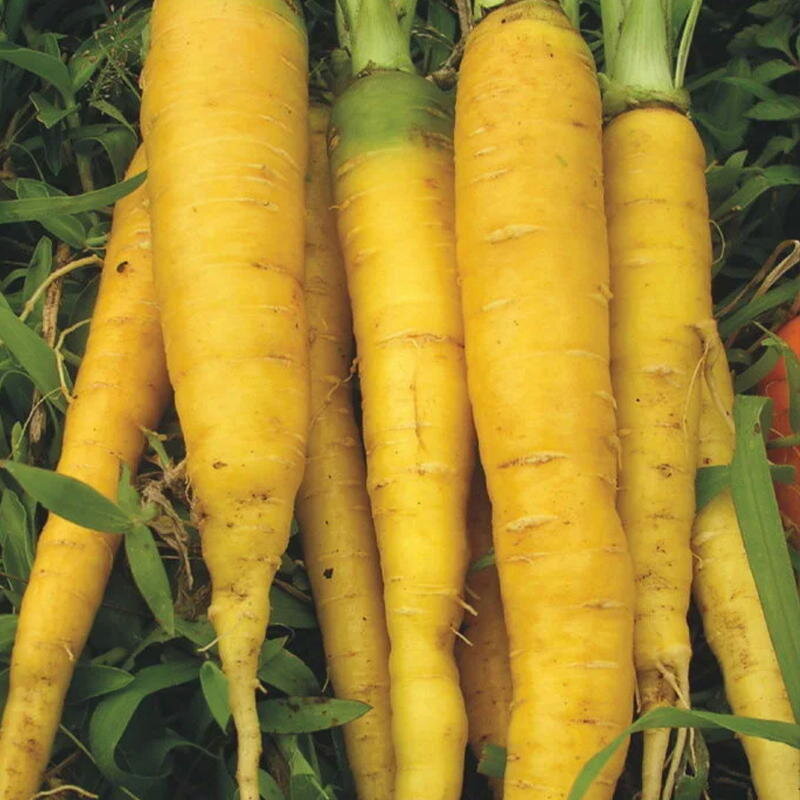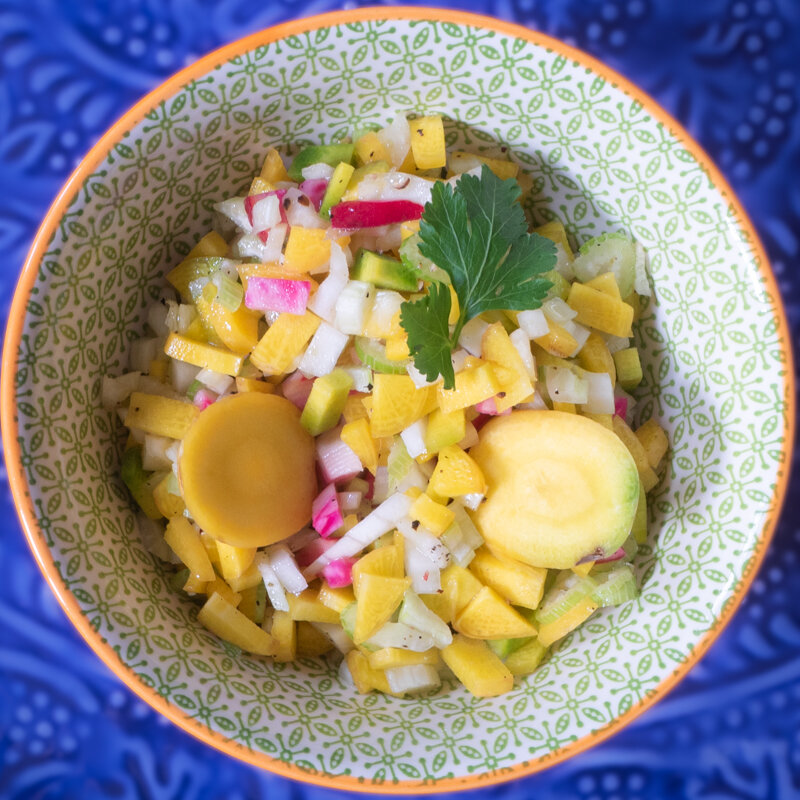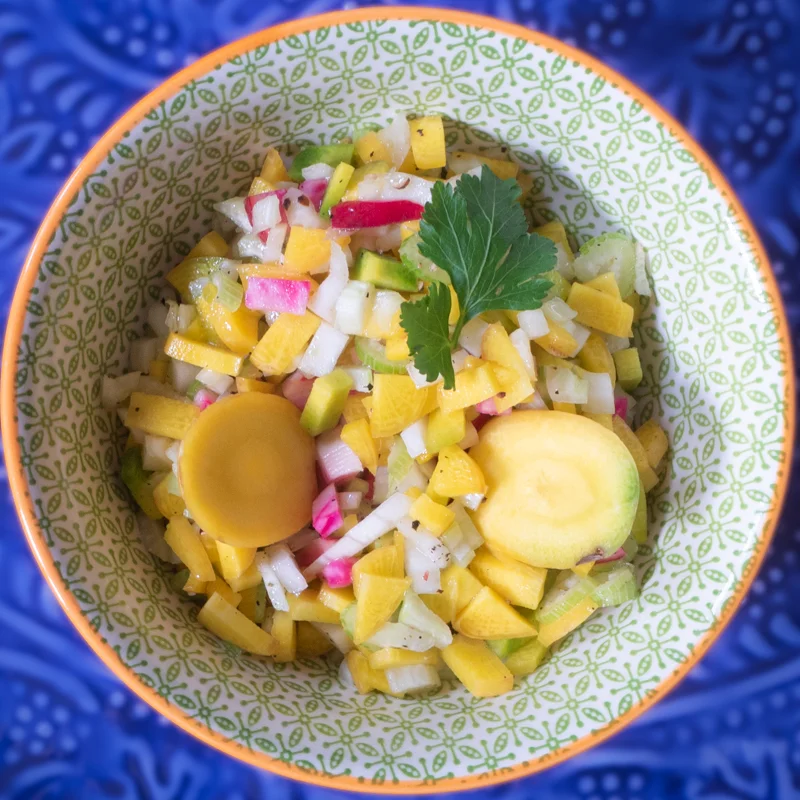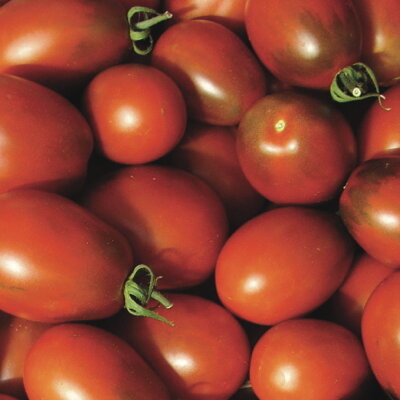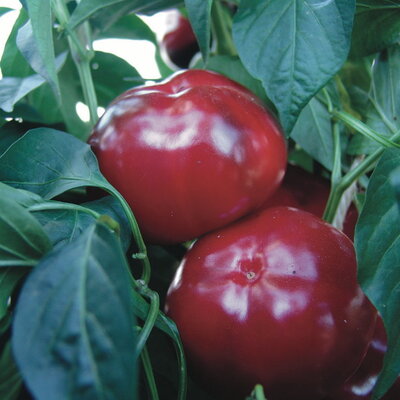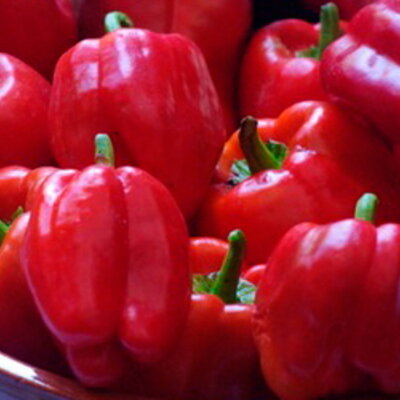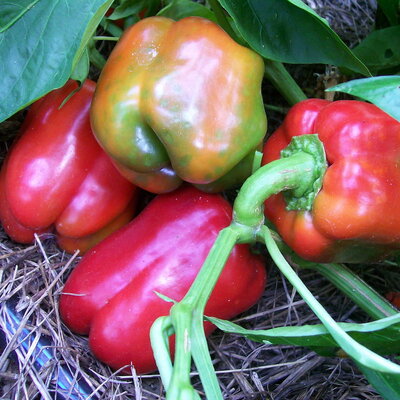Jaune du Doubs - Yellow Carrot
This ancient Franc-Comtois variety produces elongated, yellow roots with sweet flesh. It keeps very well and is considered a forage crop, but is also appreciated as a vegetable for its gustatory qualities.
Characteristics of the Doubs yellow carrot
The Jaune du Doubs or Jaune obtuse du Doubs carrot, Daucus carota, was first mentioned in 1894 by Johnson under the name "Yellow", then in 1907 by Vilmorin-Andrieux. This late variety has yellow, cylindrical roots, 15 to 20 cm long. Once used as fodder, it is now considered an excellent vegetable with a sweet taste. Like the orange carrot from Colmar à Coeur Rouge, the Jaune obtuse du Doubs keeps well through winter.
How to sow Jaune du Doubs carrot seeds?
Sow this yellow carrot directly in the ground, from February to July. Choose a sunny spot to set up your crop, and favor rich, well-drained soil that stays cool.
- Sow carrot seeds in the vegetable garden, in rows 25 cm apart. Cover with a thin layer of soil and lightly plumb. Emergence takes place 6 to 21 days after sowing, at temperatures between 10 and 24°C. Keep the soil moist until the carrot seeds have germinated;
- When plants have 3 leaves, thin to 5 cm, then a few weeks later, to 8 cm. Protect young shoots from slugs if possible;
- Water regularly in the month following sowing to encourage good root development;
- Mulch the soil to keep the carrots cool.
Be careful during the first three weeks of root development: compressed soil and the presence of stones may deform the carrot as it matures.
What companion plants should I grow with carrots?
In the vegetable garden, carrots and onions are good companions. They keep each other's flies at bay. Certain perennial and aromatic plants such as rosemary, sage, mugwort and scorzonera also reduce carrot fly infestations. This root vegetable also thrives alongside lettuce, tomatoes, radishes, peas, beans, leeks, spring onions and chives. What's more, carrots, like other plants in the Apiaceae family, attract many beneficial insects to the garden.
When to harvest the Jaune du Doubs carrot?
This variety of carrot can be harvested from June to the first frosts, 130 to 150 days after sowing. If the plants are mulched, or if it doesn't freeze, they can be harvested all year round, right up to flowering in spring.
To store, let the carrots dry for a few days before cutting off the tops a few centimetres above the collar, then wipe dry and store in a sheltered place such as a gauge, silo or cellar. They can also be stored in the ground in the vegetable garden. Cover them with a good layer of straw or leaves, at least 20 to 25 cm high, to protect them from frost. Carrots also keep well grated and lacto-fermented.
What are the virtues of carrots?
In the 13th century, carrots were considered primarily as a spice, especially for their leaves and seeds. The fruit was mainly used as feed for cattle and horses. It wasn't until the early 20th century that carotene and its benefits were discovered.
Today, carrots are appreciated for both their taste and their medicinal virtues. In Western countries, carrots account for one in every five vegetables purchased. Carrot seeds contain an essential oil used in perfumery and aromatherapy for its liver regenerating and biliary stimulating properties, as well as for its skin regenerating action. The carrot is also a tinctorial plant, used to color butter and certain cheeses.
Rich in vitamins A, B, C and E, as well as beta-carotene, this root vegetable promotes healing and regeneration, and helps regulate intestinal transit. Composed of 90% water, carrots can be made into juices and syrups, or enjoyed on the plate. Raw, it can be grated. Cooked, they can be simmered, roasted, pan-fried or steamed.
These products may also be of interest to you
in the ground
Sow in rows 25 cm apart. Pack lightly. Thin to 5 cm, then to 10 cm when plants are 10 cm tall. If possible, protect young shoots from slugs. Sow in February and March in tunnels or trays, staggering sowing every 2 to 3 weeks to spread out the harvest.
Water regularly, but lightly, to encourage emergence, then more abundantly once a week the month after sowing to prevent the roots from "digging in". Carrots can be harvested all year round if the soil does not freeze or if it is protected by mulch.
March, April, May, June
August, September, October, November
in the ground
sunny, semi-shade
medium
all floor types
drained, furniture, rich
Daucus carota
late
From 50 to 150 g
4 grams
elongated
farm
Yellow
From 15 to 20 cm
France
"Vilmorin-Andrieux "Les Plantes Potagères
This ancient variety, sometimes called "Jaune obtuse du Doubs", was mentioned by Johnson in 1894 under the name "Yellow" and by Vilmorin-Andrieux in 1907. It was included in the Confederation's Encouragement of Agriculture in 1851.



